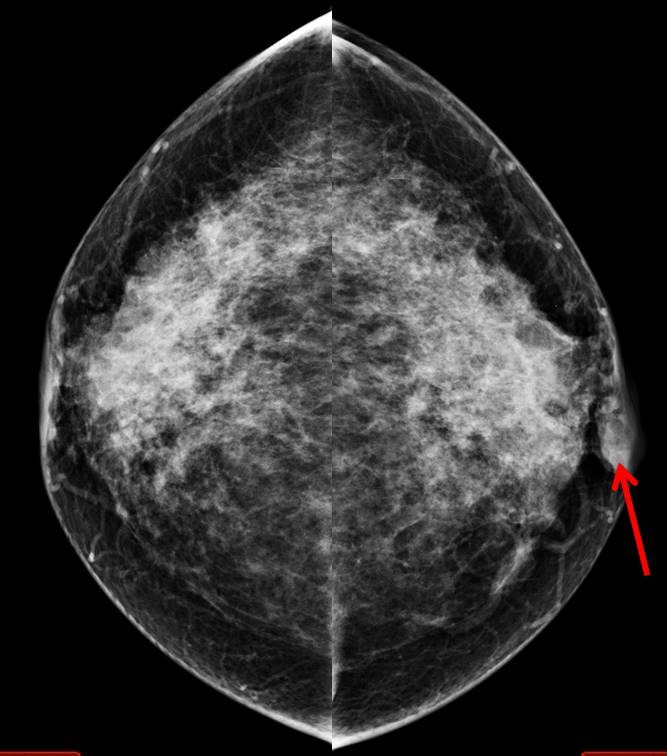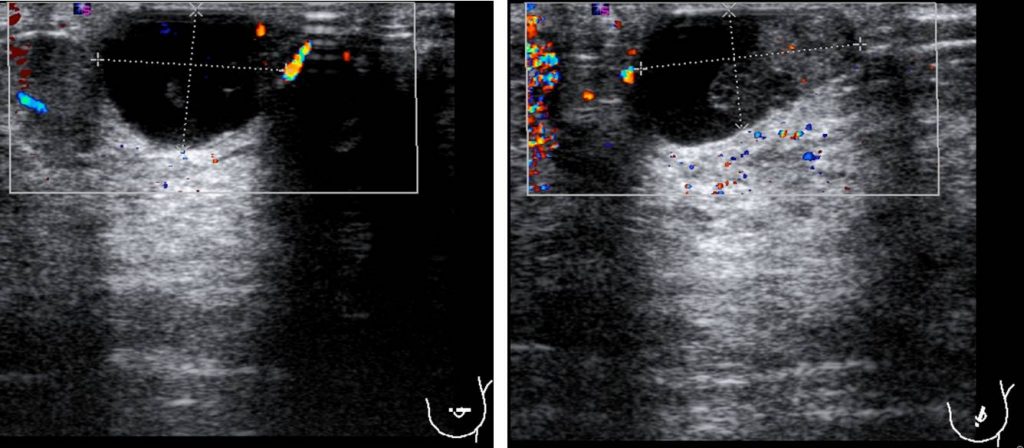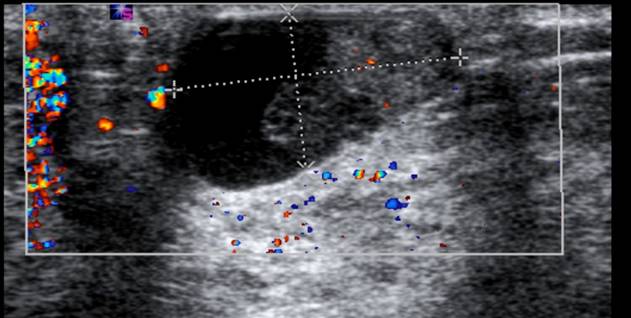Case contribution: Dr Radhiana Hassan
Clinical:
- A 60-year old lady
- Painful swelling at the left retroareolar region few days ago
- Associated with fever
- Went to GP, condition showed partial improvement with antibiotics


Mammogram findings:
- Bilaterally dense breasts (BIRADS C)
- A low density lesion at the left retroareolar region (red arrwows).
- No suspicious clustered microcalcification.
- No axillary nodes enlargement.

Ultrasound findings:
- A well-defined cystic lesion at left retroareolar region.
- There is soft tissue component within it.
- No penetrating vessels.
FNAC result:
- FNAC done at patho lab on 20/1/2016
- Aspiration of 0.8 cc straw coloured fluid
- Moderate cellularity
- Cohesive ductal cell, round/oval nuclei
- Scattered foamy and binucleated macrophages
- Apocrine metaplasia, cytoplasm abundance
- Myoepithelial cells presence
- Stromal component shows mild nuclear pleomorphism
- No infection features
Diagnosis: Fibrocystic changes with occasional atypical cells more towards benign, ductal papilloma cannot be ruled out
Progress of patient:
- Refused further follow up
Discussion:
- Fibrocystic changes is a benign non-neoplastic breast condition
- It is a common entity affecting about 90% of women
- It is usually seen in women 20-40 years, peak at or before menopause
- Intraductal papilloma is also a benign breast condition
- It affects the women in similar age group as mentioned above
- Both fibrocystic changes and intraductal papilloma does not increase risk of developing breast cancer
- However, presence of atypical cells as seen in this case can slightly increase the risk
- Multiple intraductal papilloma is also associated with higher risk of developing breast cancer
